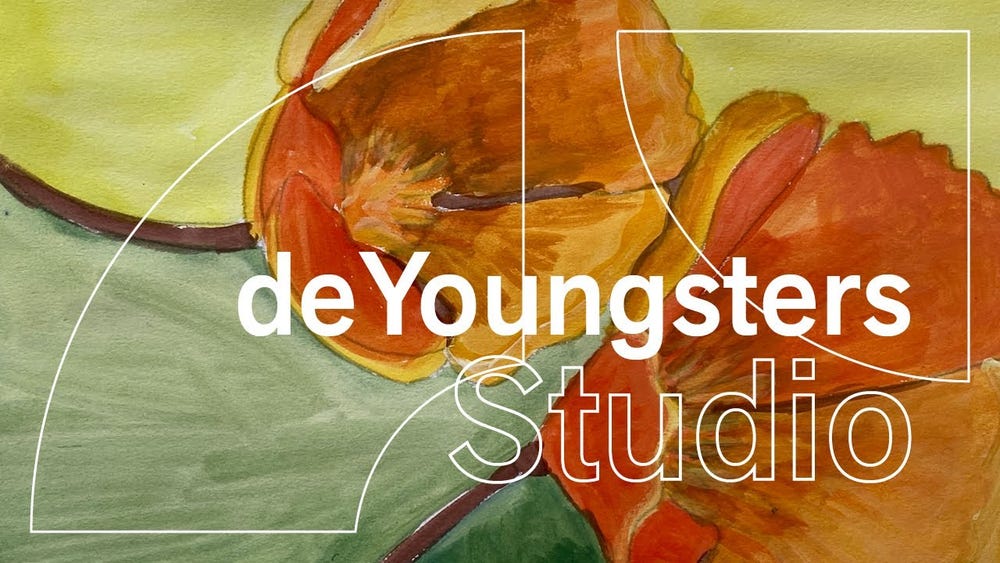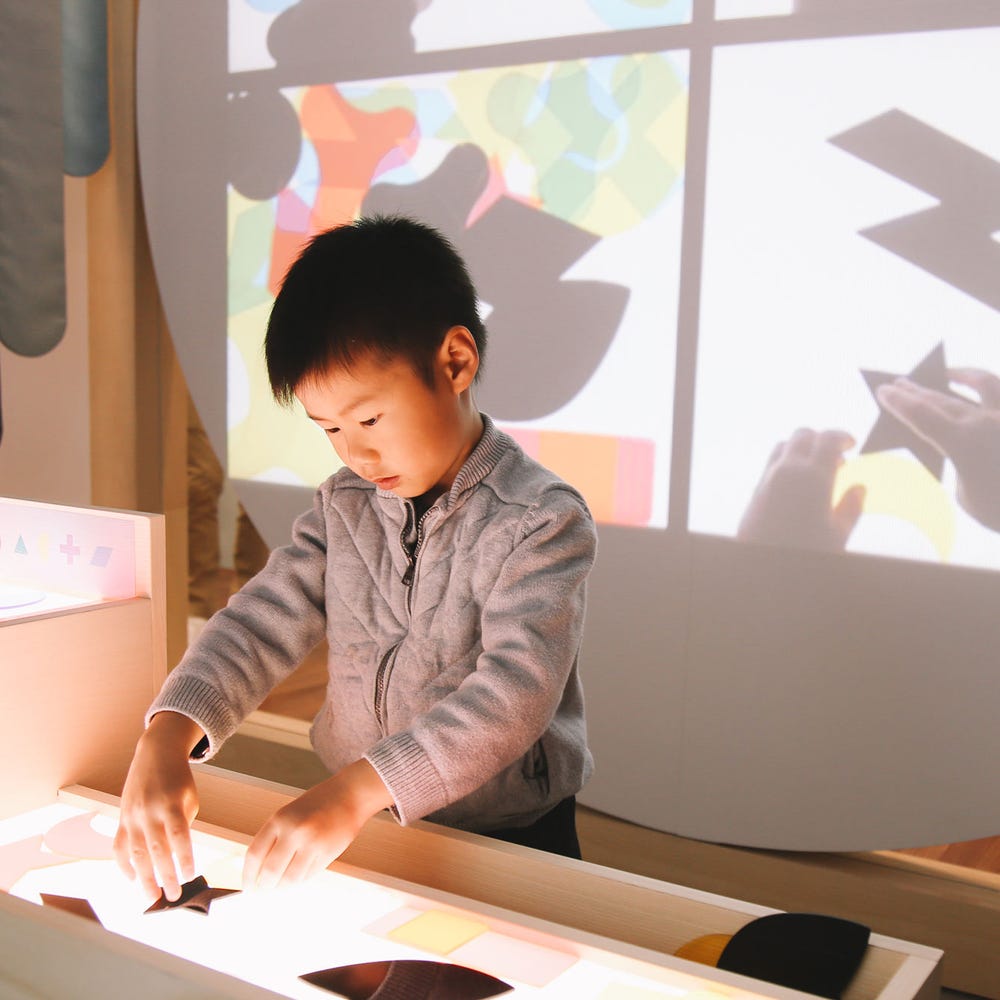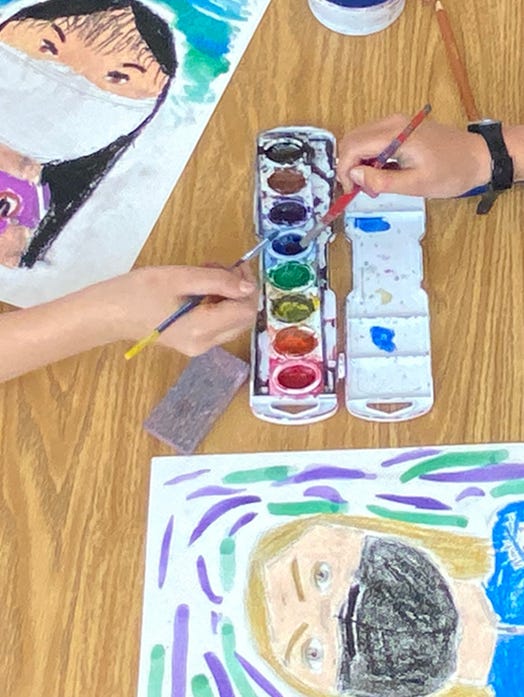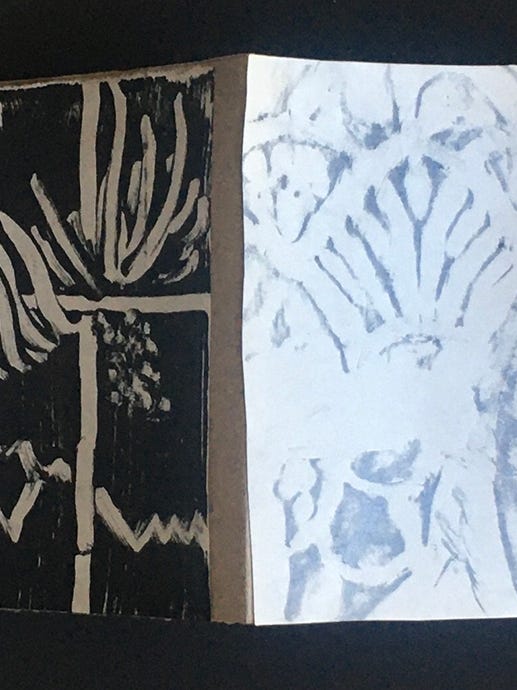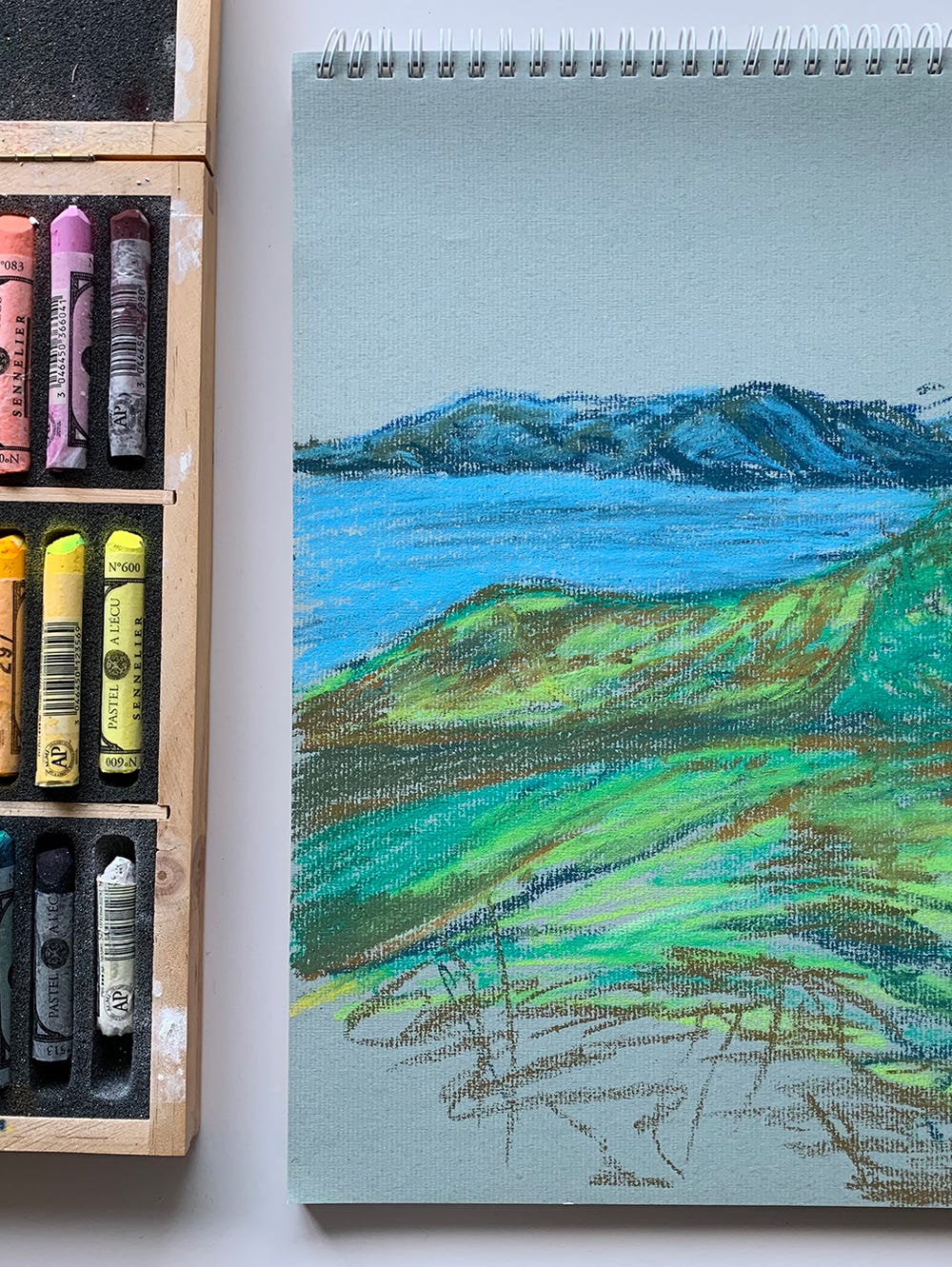de Youngsters Studio: Painting Petunias and Poppies
By Jill McLennan, senior teaching artist
June 11, 2021
Create a flower painting in close detail, inspired by Georgia O’Keeffe’s Petunias (1925). Learn about the primary, secondary, and tertiary colors on the color wheel. Mix light colors using white and make shadows with complementary colors, to paint the forms of the flower.
Materials
- A picture of a flower
- Watercolor paper
- Pencil
- Eraser
- Ruler
- Red, yellow, blue, and white tempera or other liquid paint
- Palette; plastic lids, aluminum foil, or wax paper work
- 2 brushes (small and medium size)
- Water in a cup
- Rag (paper towel or old T-shirt)
Questions to Consider
- What are tertiary colors and why do artists use them?
- What is the dominant color of your flower and where is it located on the color wheel?
- Where is your flower lightest, darkest, or shadowy?
Steps
1. Choose a picture of a flower and crop the image so that the flower touches 2 edges. On painting paper, use a pencil to draw a rectangular frame around the edge, then quickly sketch the main shapes of the flower, making it big enough to touch the edges.
2. Mix the main color of your flower and the two tertiary colors on either side of the main color on the color wheel. For example, if your flower is orange, mix orange, yellow-orange, and red-orange.
3. Paint the flower with these three colors, using water to thin the paint.
4. Add white to your main color and two tertiary colors, then continue to paint your flower, looking carefully for light areas.
5. Add a little of the complementary color to your main color to mix a shadow. For example, for orange, the complementary color is blue, which is across from it on the color wheel. Use this shadow color to paint the darker areas of your flower and add depth to your composition.
6. Mix and paint any contrasting color of your choice for the background. A contrasting color can be lighter, darker or just a different color from your main color.
Reflect
- What did you notice about the colors of your flower?
- What did you learn about color that you didn’t know before?
Share
We would love to see what you create! Email pictures of your artwork to families@famsf.org or tag us on any social platform with #deyoungsters.
